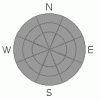SPECIAL ANNOUNCEMENT |
 |
This is the final advisory of the 2009/2010 Season. Big thanks to all who help make this forecast a success:
First off, ahuge thanks goes out toArctic Catand all the folks atBig Pine Sportsin Fairview. Big Pine & Arctic Cat are HUGE supporters of the Utah Avalanche Center. In partnership, Arctic Cat & Big Pine Sports provided me with a brand new2009 Arctic Cat M8for the season. It's an absolutely phenomenal machine. Without that sled, there would be no forecast.
Also a monster thanks to Steve Cote. Steve is my field partner more days than not. I thank him for both his time and knowledge.
Thanks so much toThe Friends of the Utah Avalanche Center. We have an AWESOME group of people on our board, and without their support, the Skyline forecast would not happen.
Last, thanks to all my colleagues at the UAC for all of their time and support. You guys rock!
|
|
|
THREAT #1 |

|
| WHERE |
PROBABILITY |
SIZE |
TREND |

|
| No probability identified. |
|
|
|
|
|
Avoiding wet avalanches is largely a game of temperature and timing. With a good refreeze (overnight lows below 32 F for a few hours) you can expect to find mostly stable conditions in the morning. But, as soon as the sun starts to bake the slopes, it's time to head home. As snow melts, free water starts to move through the pack and loosens the bonds between snow crystals, creating wet avalanches. Obvious clues of unstable spring snow include the machine bogging down in the wet stuff, and/or a rider sinking above his shins in the wet snow when they get off the machine.
The next big change in our snowpack will occur when we go a night or three without an overnight refreeze. When this happens, you can expect bigger (possibly full depth) wet avalanches. Stay on your game by checking out the UAC'sManti Skyline Mountain Weatherpage.
|
|
|
THREAT #2 |

|
| WHERE |
PROBABILITY |
SIZE |
TREND |

|
| No probability identified. |
|
|
|
|
|
While we associate spring with warm temperatures and machines, winter can still come on with a vengence. We have certainly not seen our last storm for the season, even though the money for avalanche forecasting has run out. When storms pass through the area, watch for instabilities within the new snow. Tweak small test slopes before committing to the big faces. Watch the lee sides of ridges for wind slabs. Stay away from features that look rounded/pillowed after storms, these are signs of recent wind loading.
Remember that new snow is particularily sensitive to heat, especially the first time it feels the sun's effects.
The key to captitalizing on spring storms is to get out and get the goods early before the sun comes out and shuts down the show.
|
|
|
MOUNTAIN WEATHER |

|
Great mountain weather for the Manti Skyline is availablehere. |
|
|
GENERAL ANNOUNCEMENTS |
This will serve as the final forecast of the 2009/2010 season.
Avalanche forecasts are issued for this area for the entire months of December, January, February & March.
If you see anything interesting, please let us know:
uac [at] utahavalanche center [dot] org
Or call: (801) 524-5304
Thanks, and we'll see you next year. |
|
|
This information does not apply to developed ski areas or highways where avalanche control is normally done. This advisory is from the U.S.D.A. Forest Service, which is solely responsible for its content. This advisory describes general avalanche conditions and local variations always occur. |
|
This advisory provided by the USDA Forest Service, in partnership with:
The Friends of the Utah Avalanche Center, Utah Division of State Parks and Recreation, Utah Division of Emergency Management, Salt Lake County, Salt Lake Unified Fire Authority and the friends of the La Sal Avalanche Center. See our Sponsors Page for a complete list. |


